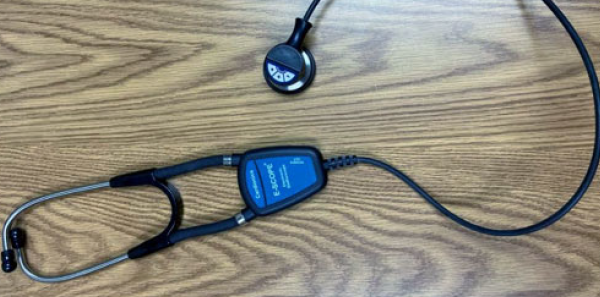
DB: Dr. Palmer, what are the typical abnormal findings on an audiogram?
Explore This Issue
ACEP Now: Vol 39 – No 08 – August 2020CP: The most common cause of hearing loss is damage to the inner ear, which is permanent and is typically treated with hearing aids provided by an audiologist. Cochlear implants can be used in cases of total hearing loss.
DB: Why is it that people with sensory hearing loss can hear people speak but sometimes not understand what they are saying?
CP: We hear a range of frequencies (low pitches to high pitches) over a range of input levels (soft to loud). Hearing loss often differs at different frequencies, which means a person may have good low-frequency hearing but hearing loss in the high frequencies. If so, the individual will know someone is talking (hearing the low frequencies) but won’t have the clarity of the message, which is carried primarily by the mid to high frequencies.
Although well-fit hearing aids provide tremendous benefit to communication, they do not return normal hearing. Damage to the inner ear causes sensory problems in distinguishing between frequencies and temporal processing issues. Well-fit hearing aids bring back sound, but the sensory system remains damaged and distorts the signal. This means the individual will still need good communication strategies, such as facing the talker, reducing background noise, etc.
DB: What can one expect from hearing aids?
CP: Hearing aids are fit by placing a microphone in the ear canal and measuring the hearing aid’s output across frequencies and input levels. The audiologist adjusts the output to achieve audibility.
People getting hearing aids for the first time typically have had untreated hearing loss for at least seven years. The brain has adapted to this reduced input and considers it normal. If hearing aids are fit well, the individual will not like the sound at first because the brain is not used to pitches that were previously inaudible. If, in response, the hearing aids are adjusted based on patient preference, the hearing aid would be tuned to replicate their hearing loss. This is why the initial fitting is done through objective measurements so the audiologist can confidently counsel the patient to wear the hearing aids full time so the brain can adapt to the new inputs. This adaptation typically takes about three weeks, at which time the audiologist can make tuning changes based on the patient’s perceptions after ongoing exposure.
Individuals who try to be part-time hearing aid users aren’t usually successful because this puts the brain in a constant state of adaptation. These individuals usually report that sounds are sharp and/or too loud. Audible fitting and full-time use are the ingredients for success.
Pages: 1 2 3 4 5 | Single Page





One Response to “Stethoscopes & Hearing Aids: Choosing the Right Devices for You”
June 28, 2021
rahul kumarWhere I can buy a amplified stethoscope..